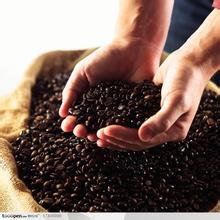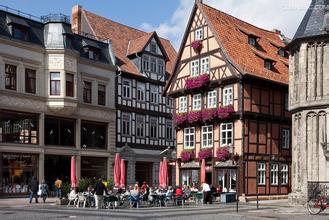China's coffee market has ushered in a boutique era-the main consumer groups are urban workers.
The first stage: Nestl é starts with its "good day" to influence and transform people's way of life, so that more people can try and accept coffee. Shangdao Cafe advocates freshly ground coffee to make more people accept the original coffee, and with its chain business model, it has expanded all over China. At this stage, Shangdao Cafe has opened more than 2600 coffee shops in mainland China, accounting for 90% of China's coffee market.
The second stage: Starbucks enters China's first-tier market. Driven by it, espresso has become popular in first-tier cities, and espresso and cappuccino have become fashionable consumer drinks. Starbucks in the first-tier cities first-class business district and espresso in this segment of the market performance was completely unique at that time.
The third stage: CAFFE PASCUCCI broke the monopoly of Starbucks and Taiwan-funded cafes on the Chinese market, resulting in the prosperity of the coffee market. Now the coffee market has entered the boutique era, some foreign boutique coffee has entered the Chinese market, and has been favored by the market. CAFFE PASCUCCI is an authentic Italian coffee, which maintains the traditional method in the production process, treats every production process with the heart of craftsmen, and brings fine coffee to consumers.
Coffee is relatively late in China, but it has maintained a rapid development for 10 years, and domestic coffee has entered the fourth stage-the era of boutique. For the development of China's coffee market, industry insiders have done a lot of research, and combed the development of the industry. Generally speaking, so far, the domestic coffee market is mainly divided into three stages, the first stage is represented by Nestl é and Shangdao Coffee, the second stage is represented by Starbucks, and who is the representative of the third stage boutique era?
China's coffee market has ushered in a boutique era. According to the survey, the main consumers of coffee are urban workers. This part of the consumer group is also the leader of social fashion, they are interested in foreign food culture and easy to accept. With the consumption of coffee, coffee culture came into being, and the coffee shop has become the breeding place of coffee culture. To a certain extent, coffee culture also promotes coffee consumption and attracts more and more consumers. China's coffee market has ushered in the era of boutique coffee, and the taste of domestic consumers is also gradually refined.

Important Notice :
前街咖啡 FrontStreet Coffee has moved to new addredd:
FrontStreet Coffee Address: 315,Donghua East Road,GuangZhou
Tel:020 38364473
- Prev

Flavor description of Arabica Coffee beans introduction to the taste of varieties produced by grinding scale
Arabica coffee bean flavor description grinding scale production area variety taste introduction to planting, Robasta coffee tree can withstand high temperature, cold resistance, drought resistance, moisture resistance, pest resistance and strong adaptability, and can grow very well on flat ground. unfortunately, the coffee beans produced are lack of aroma, strong bitterness (because of caffeine) and lack of acidity, so they are mostly used for instant coffee.
- Next

On the change of Coffee Market and the way of Commercial Development in the Future
According to Taiwanese media, each person on the mainland drinks an average of four to five cups of coffee a year, about 100 cups in Taiwan, and more than 300 cups in Japan and South Korea. Because of this, more people see the business potential for the development of coffee in the mainland. Some coffee experts say that if each person in the mainland drinks 20 cups a year, the price of coffee in the world will rise threefold, which shows the great influence of the mainland on global coffee. According to a report by Taiwan's Zhongshi Electronic News on March 2,
Related
- Beginners will see the "Coffee pull flower" guide!
- What is the difference between ice blog purified milk and ordinary milk coffee?
- Why is the Philippines the largest producer of crops in Liberia?
- For coffee extraction, should the fine powder be retained?
- How does extracted espresso fill pressed powder? How much strength does it take to press the powder?
- How to make jasmine cold extract coffee? Is the jasmine + latte good?
- Will this little toy really make the coffee taste better? How does Lily Drip affect coffee extraction?
- Will the action of slapping the filter cup also affect coffee extraction?
- What's the difference between powder-to-water ratio and powder-to-liquid ratio?
- What is the Ethiopian local species? What does it have to do with Heirloom native species?

